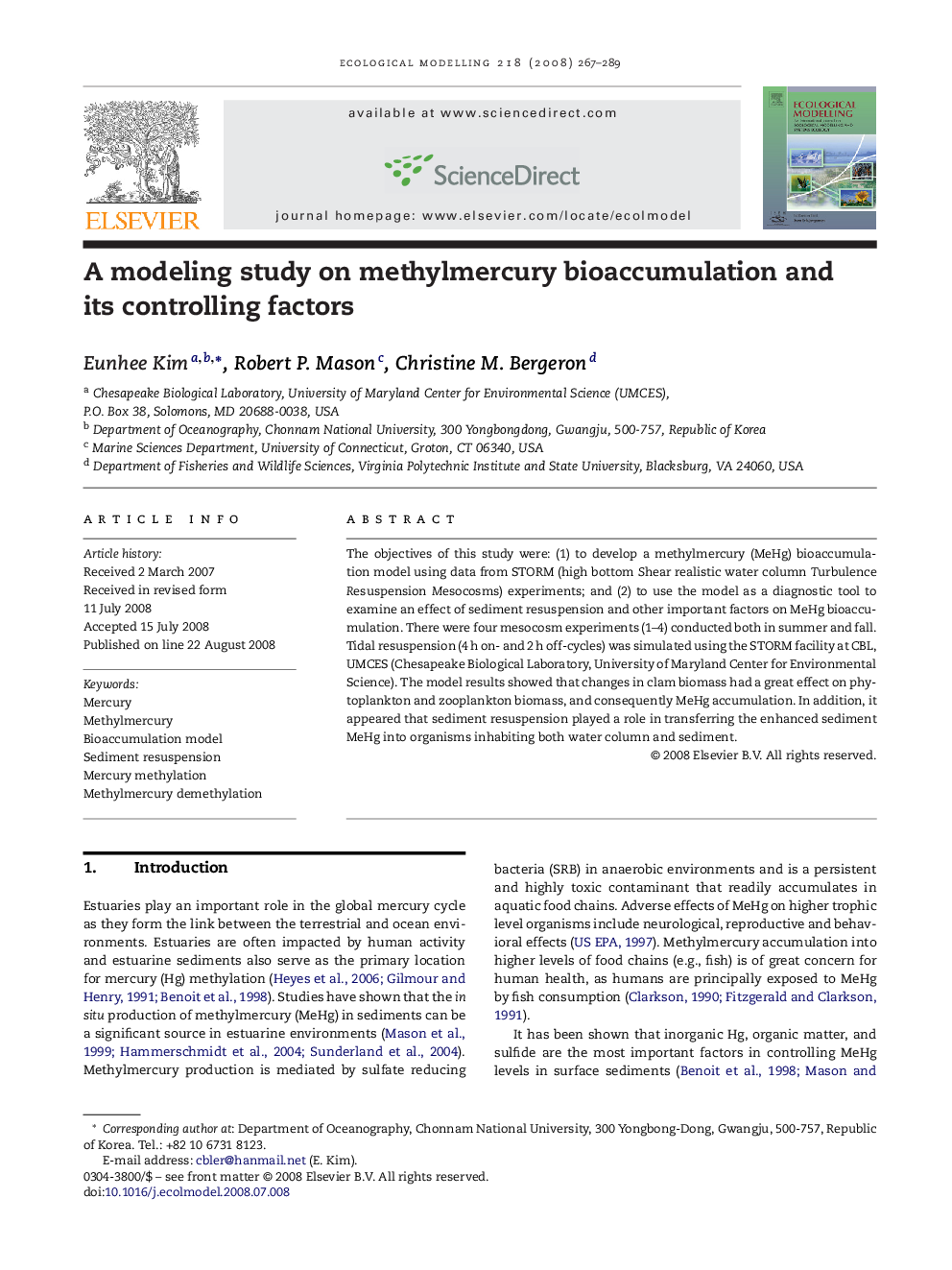| Article ID | Journal | Published Year | Pages | File Type |
|---|---|---|---|---|
| 4378433 | Ecological Modelling | 2008 | 23 Pages |
Abstract
The objectives of this study were: (1) to develop a methylmercury (MeHg) bioaccumulation model using data from STORM (high bottom Shear realistic water column Turbulence Resuspension Mesocosms) experiments; and (2) to use the model as a diagnostic tool to examine an effect of sediment resuspension and other important factors on MeHg bioaccumulation. There were four mesocosm experiments (1-4) conducted both in summer and fall. Tidal resuspension (4Â h on- and 2Â h off-cycles) was simulated using the STORM facility at CBL, UMCES (Chesapeake Biological Laboratory, University of Maryland Center for Environmental Science). The model results showed that changes in clam biomass had a great effect on phytoplankton and zooplankton biomass, and consequently MeHg accumulation. In addition, it appeared that sediment resuspension played a role in transferring the enhanced sediment MeHg into organisms inhabiting both water column and sediment.
Related Topics
Life Sciences
Agricultural and Biological Sciences
Ecology, Evolution, Behavior and Systematics
Authors
Eunhee Kim, Robert P. Mason, Christine M. Bergeron,
